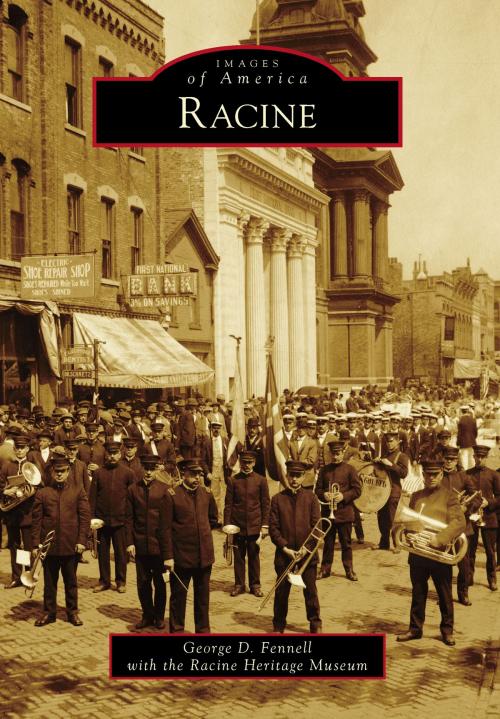| Author: | George D. Fennell, Racine Heritage Museum | ISBN: | 9781439647493 |
| Publisher: | Arcadia Publishing Inc. | Publication: | September 29, 2014 |
| Imprint: | Arcadia Publishing | Language: | English |
| Author: | George D. Fennell, Racine Heritage Museum |
| ISBN: | 9781439647493 |
| Publisher: | Arcadia Publishing Inc. |
| Publication: | September 29, 2014 |
| Imprint: | Arcadia Publishing |
| Language: | English |
When Gilbert Knapp founded Racine in 1834 and the first pioneers settled there, no one had the remotest idea that the wilderness would one day transform into a thriving city. Ideally situated on Lake Michigan at the mouth of the Root River, the site was chosen by Knapp because of its harbor potential. The prospect of farming on the level prairies surrounding Racine also attracted many of the area�s first settlers. Racine County is especially suited for growing wheat, which immediately became the county�s leading agricultural product. The town of Racine quickly became a prosperous center serving the needs of the area�s farm population. Even Racine�s industrial base was founded on wheat; in 1842, J.I. Case invented a wheat thresher that helped Racine to grow into one of the foremost industrial centers in the United States.
When Gilbert Knapp founded Racine in 1834 and the first pioneers settled there, no one had the remotest idea that the wilderness would one day transform into a thriving city. Ideally situated on Lake Michigan at the mouth of the Root River, the site was chosen by Knapp because of its harbor potential. The prospect of farming on the level prairies surrounding Racine also attracted many of the area�s first settlers. Racine County is especially suited for growing wheat, which immediately became the county�s leading agricultural product. The town of Racine quickly became a prosperous center serving the needs of the area�s farm population. Even Racine�s industrial base was founded on wheat; in 1842, J.I. Case invented a wheat thresher that helped Racine to grow into one of the foremost industrial centers in the United States.















